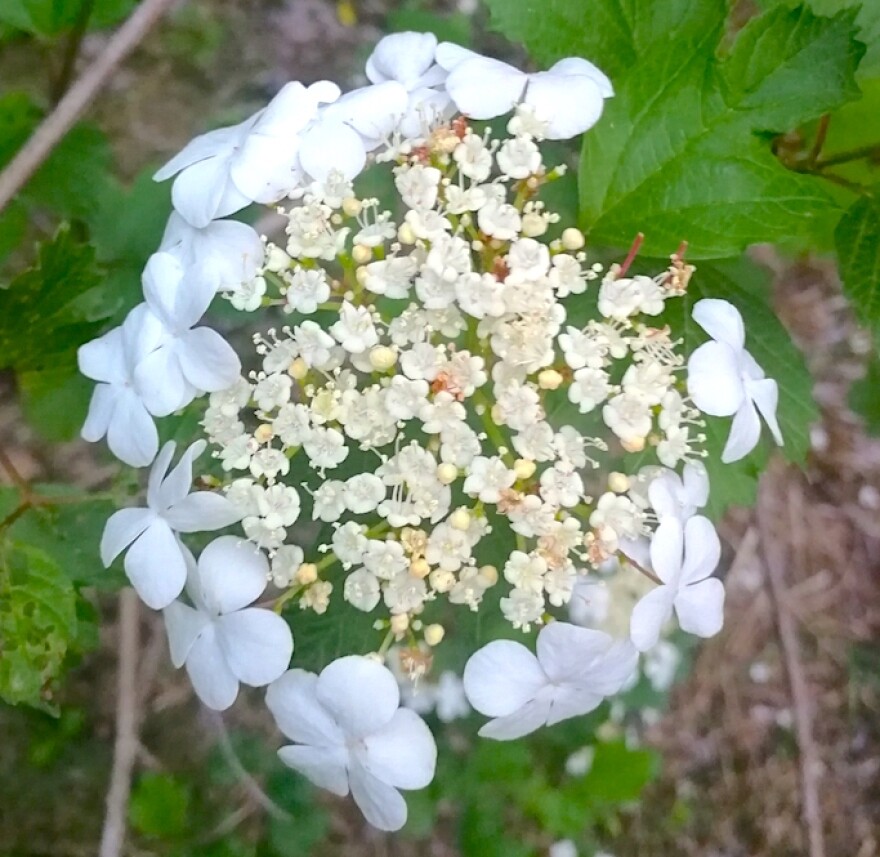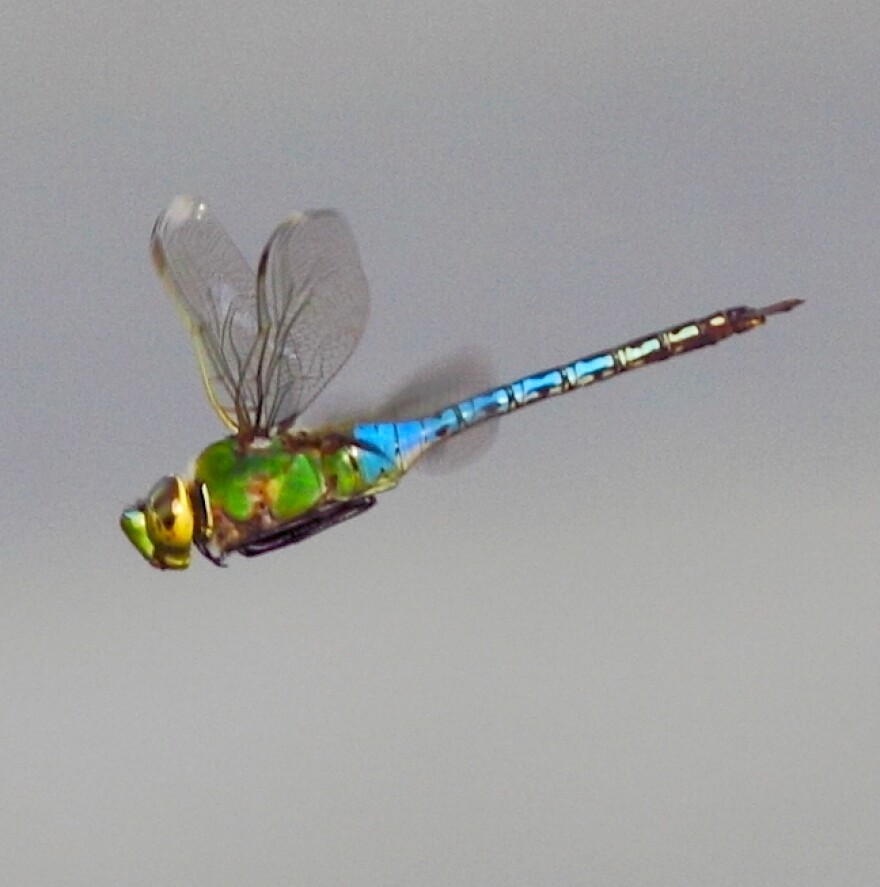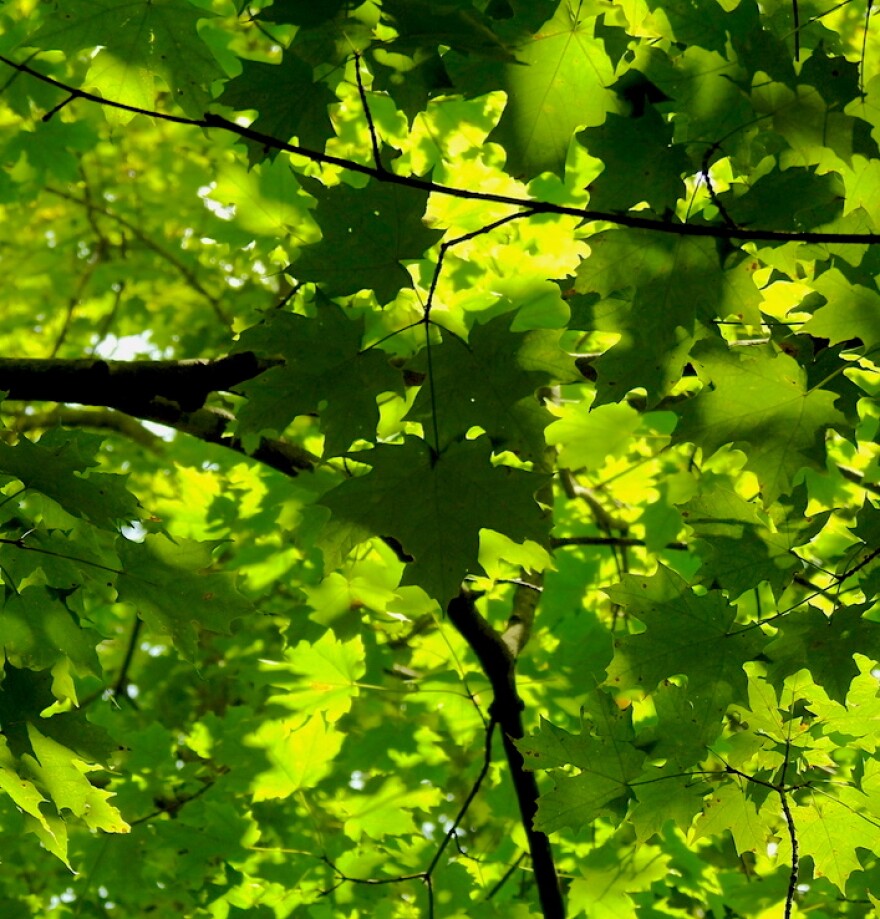Reminder: Our Season Watch newsletter has launched! Subscribe here.
We start this week's phenology report with this fun little co-host exchange:
——
Heidi: "John Latimer's phenology report is up next."
John: "We hope."
Heidi: "That's what your contract says, John!"
——
A+ radio banter, you two dorks. Anyways, on to the flora and fauna!
John starts by referencing his conversation with Dallas earlier in the morning. Their datasets agree that summer is still about a week late:
- Bunchberry started to bloom six days later than typical.
- Columbine flowered ten days late. John adds that this is often misidentified as honeysuckle (photo below).
- Canada mayflower blossomed eight days late. Often called 'ruby red' after its red berries, the berries are sweet but have a large pit (aka stone).
- Pagoda dogwood (aka alternate-leaf dogwood) bloomed three days late.

John also provides updates on the progression of other plants:
- Round leaf dogwood isn't flowering yet.
- Raspberries and blackberries, which typically bloom in early June, have budded but not bloomed yet.
- The mountain ashes, common chickweeds, yellow hawkweeds, pink moccasin flowers, smooth roses, white campions, and sarsaparilla are flowering.
- Highbush cranberry is blooming. John says to look for a big disc of white flowers, where the outside edge is dominated by large, four-petaled flowers (3/4ths of an inch across). The smaller flowers on the interior are fertile, while the larger flowers on the edge function to attract insects. To confirm your identification, check that the branches are opposite and the leaves look like maple leaves!

Who says being bogged down is a bad thing? In swampy or boggy areas, you might see flat discs of white flowers from the Labrador tea plant or maybe a few bog laurels hanging on to their bright pink blooms. In many of these wetlands, cotton grass is blooming- their white tufts of cotton-like seeds (not flowers!) dot the landscape. To top it off, the pitcher plants are sending up new flowers! (Read more about the pitcher plants on this week's phenology talkbacks segment.) John encourages you to get out and take a stroll through your local bog: just wear your waterproof boots!
While the ferns lack flowers, they are no less beautiful. Ferns reproduce with spores, not seeds: these spores are created in organs called sori (pronounced sore-eye, though they're quite pretty. Sorus is the singular form). Just as many flowering plants only bloom during part of the year, ferns in Minnesota produce spores seasonally. John reports that the cinnamon fern has put up its sori, which are found in a tall spike growing from the center of the clump. The interrupted fern's sori are in the middle of the frond: while developing, they are a dark green and look different from the non-fertile portions of the frond. Above and below this spore-producing section, you'll find typical frond leaflets (called pinnules); the sori interrupt the frond, and thus the name "interrupted fern."

Meanwhile, the great dragonfly emergence continues. John's been monitoring the chalk-fronted corporals (does that make him a chalk-fronted sergeant?). Chalk-fronted corporals congregate in huge numbers on gravel roads and trails, often far from the nearest water source. The "chalk" from the name comes from their white, chalky-looking markings, which is called pruinescence. The markings develop as the dragonfly matures; John found his first chalk-fronted corporal complete with white markings on Saturday! As they become more prominent, the dragonfly will be much easier to identify. John reminds us that dragonflies are the world's most effective predator (with a 95% prey capture rate!) and are also one of the most beautiful. Check out the colors on this common green darner dragonfly!

That's not all the insect-based beauty momma nature has to offer us! The fireflies are lighting up the evening sky, and there are butterflies aplenty (John has seen mourning cloaks, tiger swallowtails, and monarchs).
All this new life can carry costs, however. John saw his first dead crow of the season last week and points out that dead crows are a relatively rare sight for most of the year. Crows are incredibly intelligent and more than smart enough to avoid getting hit by cars (they've even figured out crosswalk signals! One group uses passing cars to crack open nuts, then flies down when the 'walk' sign is on to pick up the food. Check out David Attenborough's segment on this behavior here!). However, baby crows fledge in June and often lack the coordination to get off the road in time to avoid getting hit. One of John's more morbid phenology events is seeing his first dead crow of the season: his average date is June 18th. He points out that this is a much more arbitrary seasonal measurement than most, as it comes down to what roads he's driving and where the crow nests are that year, but most years, he notes at least one.
"I could go on about a lot of things," says John. ("We know!" we shout at our radios.) He notes that shade is becoming much more dominant in the woods as the maple and aspen leaves approach full size. The oak leaves, while not full size, are quite large; all that shade will change the composition of plants on the forest floor. Currently, there are plenty of spring ephemerals still blooming, taking advantage of the little bit of sunlight still available.

That does it for this week! Go find a bog, investigate some ferns, and hit the brakes for those poor baby crows!
Remember that you can send in your reports, anecdotes, and observations! We would love to hear from you (or your children/grandchildren). Contact me (smitchell@kaxe.org) or John (jlatimer@kaxe.org), or text 'phenology' to 218-326-1234.
For more phenology content, subscribe to our Season Watch newsletter!






